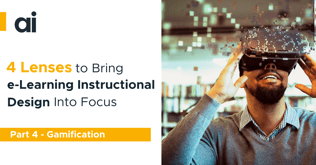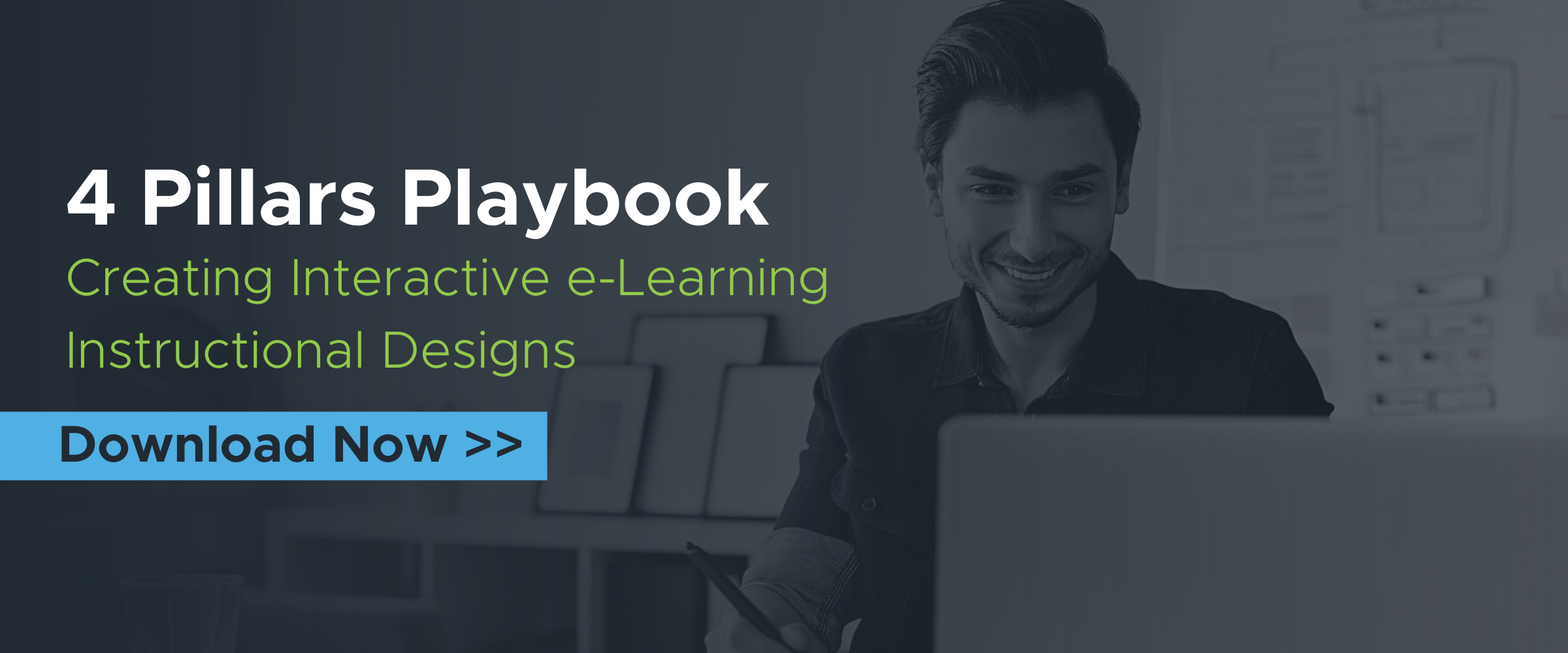Blog
Pillar IV for Transformative e-Learning Instructional Design: Feedback
Pillar I Blog: Context Pillar II Blog: Challenge


Pillar III for Transformative e-Learning Instructional Design: Activity
By Ethan Edwards | March 08, 2021 | Custom Learning | 1 Comment
Pillar I Blog: Context
Pillar II Blog: Challenge
ac·tiv·i·ty | ak-ˈti-və-tē | noun
1. the quality or state of being active: behavior or actions of a particular kind
Designing great Activities is at the very core of creating e-learning that works. And the CCAF Design Model is a fantastic guide for thinking up instructional interactions that engage, challenge, and transform the learner to master new skills and enrich on-the-job performance.
CCAF, of course, is our shortcut for recalling that a good interaction needs meaningful CONTEXT, engaging CHALLENGE, productive ACTIVITY, and transformative FEEDBACK. I recently lead a series of four short online sessions, each focused on clarifying the meaning and significance of each CCAF pillar. This week we are up to ACTIVITY.
In the CCAF sense, Activity is at the very core of any instructional interaction. What the learner is literally asked to do has an enormous impact in creating focus, engaging full attention and senses, creating memories, and setting the model for transferring skills to the performance environment. Activity describes the specific gestures and actions that the learner undertakes in response to the Challenge. You can’t actually have an interaction without the Activity part; the trick is to design activities that create learning.
Here are a few powerful ideas to guide you in designing the Activity component of CCAF. We’ll be exploring these in the webinar.
4 ways to make e-learning activities powerful
1. make the activity observable and unique.
Many Activity-weak interactions rely on too much reading. Why is this a problem? Reading itself can be really impactful, but in an e-learning environment there is no observable indicator that the e-learning Activity (i.e., reading) has even been done. If the designer has no mechanism to gauge if the core learning Activity has been completed, the whole interchange quickly falls apart, hence the huge number of learners who simply don’t read.
2. activities should require attention and thought
If you can do the Activity in an interaction without specific attention, it will do very little to create a lasting, meaningful thought. Doing the gestures to answer a traditional multiple-choice question can be done without even attending to a single detail of the Challenge at hand. It’s a really bad Activity simply because the designer can’t tell if the gesture is being done authentically or thoughtlessly. The result is learners who become great at guessing and mastering false but often successful strategies (like, “the longest answer is the correct one”).
3. activity should suggest real-world behavior
A great Activity gets the learner to forget the artificial constraints of working online and creates the illusion of the Activity in the real world. Traditional online activities are good at suggesting an academic, testing-focused world. Instead, take advantage of your Context to build a convincing illusion that the learner is making decisions and gestures rooted in the physical world.
4. good activities require effort
The learner benefits by expectations of proactive, exploratory experimentation, only made possible by designing the possibility of a wide range of gestures or outcomes from which the learner chooses and then executes. Any gesture undertaken by the learner should be the result of active thinking and focused action.
These are the core ideas I bring to the design table when working on an interaction. There are, of course, many ways to approach a problem, but I find beginning my design thinking with Activity often results in my most impactful custom e-learning solutions.
Join me in this session where we will dig a little deeper into these and related ideas, and as always, share the meaning of these ideas through demonstrations of real-world examples.
Read More
Pillar I Blog: Context
Pillar II Blog: Challenge
Pillar IV Blog: Feedback
Download your exclusive copy of the 4 Pillars Playbook to create interactive e-learning instructional designs!

About the Author: Ethan Edwards
Ethan Edwards draws from more than 30 years of industry experience as an elearning instructional designer and developer. He is responsible for the delivery of the internal and external training and communications that reflect Allen Interactions’ unique perspective on creating Meaningful, Memorable, and Motivational learning solutions backed by the best instructional design and latest technologies.
Comments
Hello, I am good with the explanation you have given on the article. It is really good to understand about the fact.
Would you like to leave a comment?
Related Blog Posts

By: Ethan Edwards | Mar, 2021
Category: Custom Learning

Blog
Pillar II for Transformative e-Learning Instructional Design: Challenge
Pillar I Blog: Context Pillar II Blog: Challenge
By: Ethan Edwards | Feb, 2021
Category: Custom Learning

Blog
4 Lenses To Bring E-Learning Instructional Design Into Focus: Part 4 - ...
Pillar I Blog: Context Pillar II Blog: Challenge
By: Ethan Edwards | Aug, 2022
Category: Custom Learning


Vaibhav kakkar
3/15/2021, 2:15 PM